Enjoy my recipe for classic Japanese Ginger Pork (Shogayaki). With tender and thinly sliced pork loin in a sweet ginger sauce, this is one of my favorite homemade dishes. Ready in 20 minutes!
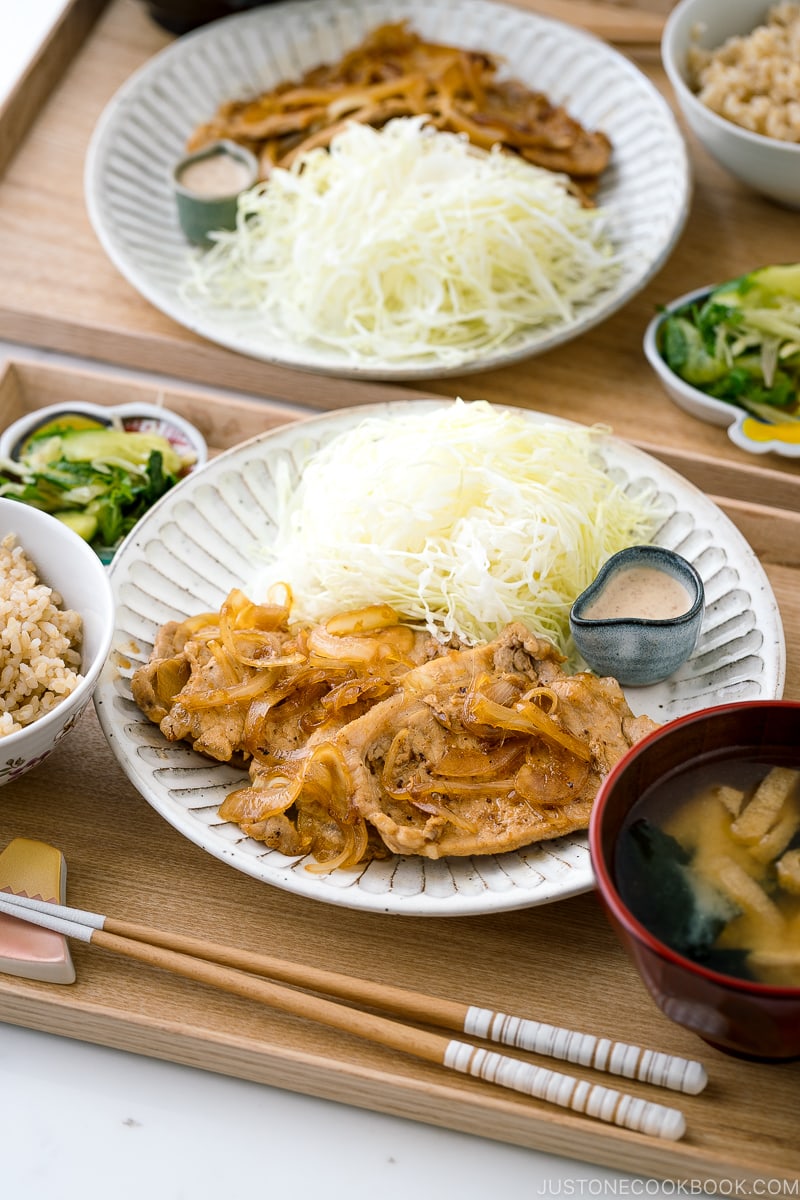
Ginger Pork, or what we call Shogayaki (生姜焼き), is a homey Japanese dish. I loved it when I was growing up and still enjoy it very much these days. When I miss home, I’d often cook this for our family dinner and for the kids’ bento lunches.
The tender, juicy pieces of pork coated in a sweet gingery sauce, and served over rice? Pure comfort food. Today I’ll show you how to make this popular mom-style food at home.
Table of Contents
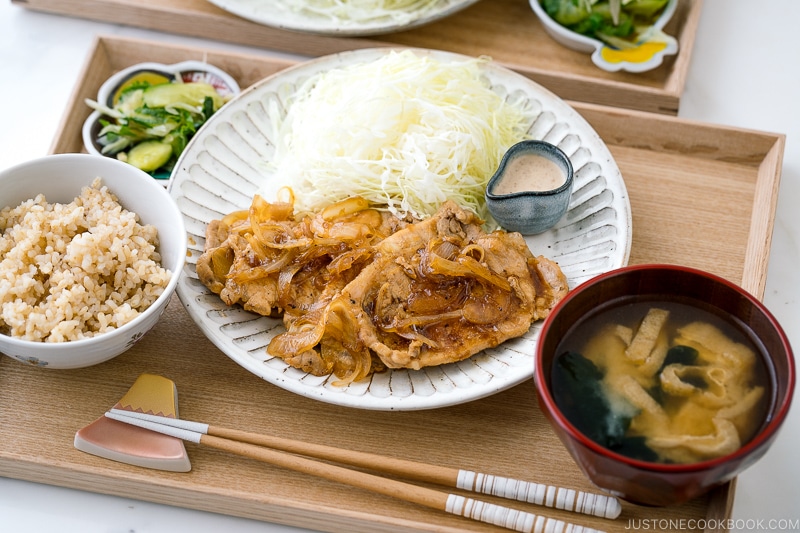
What is Ginger Pork?
In Japan, we call this dish Shogayaki (生姜焼き). Shoga (生姜) means ginger and yaki means grill or fry. Here, we cook thinly sliced pork with soy sauce, sake, and mirin along with ginger.
Each family makes their ginger pork slightly different so you’ll find some variations. Some cook it without onion, some make it without any sweetener (no mirin or sugar), some may include garlic, and some may use different cuts of the pork.
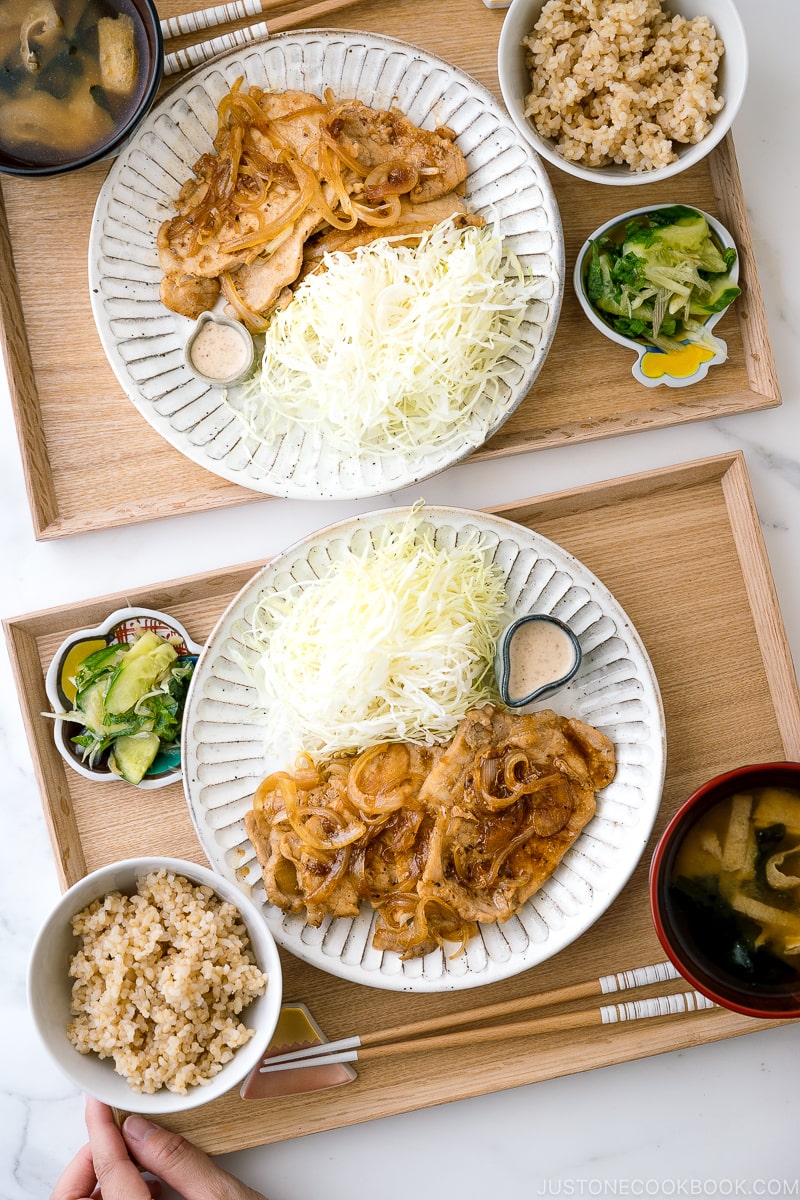
Ingredients for Shogayaki
The detailed recipe is in the recipe card below.
- Thinly sliced pork – You can use other kinds of meat, but in Japan, Shogayaki always refers to a pork dish.
- Flour – This is a new trick I learned to make sure the pork is not dry. More about this later.
- Sake – We always use sake to sprinkle on pork (or other meats) to remove any gamey smell and taste.
- Ginger – Prepare enough ginger as we’ll also be using the ginger juice.
- Ginger Sauce: soy sauce, sake, mirin, sugar, and juice from the grated ginger.
How to Cook Ginger Pork
- Make the ginger sauce.
- Pan-fry the pork slices in batches and take them out to a plate.
- Saute the onion until translucent.
- Add the pork back into the pan and pour the sauce.
- Once the meat is well coated with the sauce, transfer to a serving plate. Enjoy!
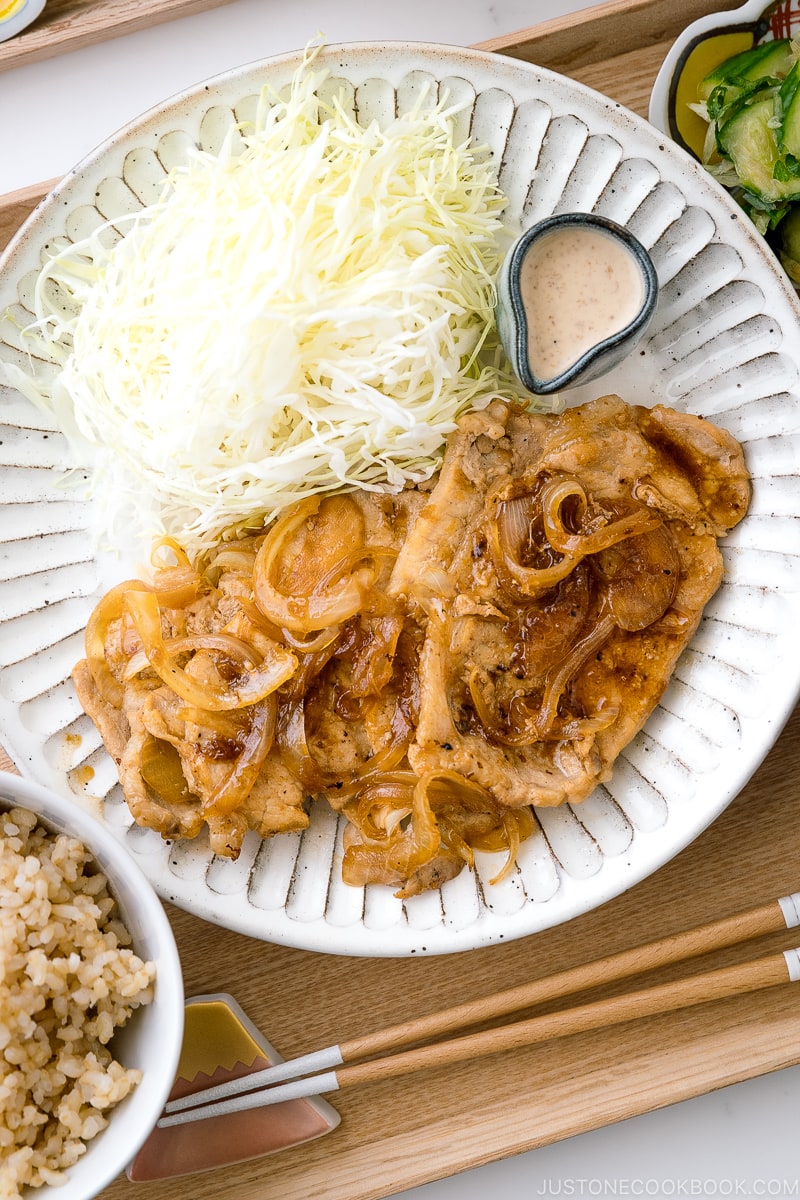
Cooking Tips to Make Juicy Ginger Pork
The biggest challenge with cooking pork is the meat can get dry and tough easily. Over the years, I’ve learned a few tips that help the pork stay moist and tender.
1. Use good-quality pork
The quality of the pork makes a huge difference, and I have to mention this first.
There are two types of thinly sliced pork cut in Japan that are used for ginger pork: the first one is pork loin or pork chop, and the other one is country-style pork ribs (this post explains the cut in detail).
It’s up to your preference, but the country-style pork ribs have nice fat in the middle so it yields juicy meat.
2. Use thinner (⅛ inch or 3 mm-thick) pork
You can get a conveniently sliced and packaged “Ginger Pork Cut” at Japanese grocery stores. This cut is pork loin (pork chop), not country-style pork ribs.
Asian grocery stores may carry thinly sliced pork for hot pot. These “hot pot” pork slices are thinner than the ones we use for ginger pork. I personally do not mind these thin pork slices but keep in mind that you can’t “sear” paper-thin pork slices. The sliced meat will shrink and curl up (which is ok!) but it will be more of a stir-frying style.
If you don’t live near a Japanese market or Asian market, you can easily slice your own meat (follow my tutorial). Make sure your slice is less than ⅛ inch (3 mm). Thick pork slices get chewy and tough.
3. Make slits
It’s very important to make several slits on the connective tissue (white area) between the meat and fat. Red meat and fat have different elasticities, and when they are cooked, they will shrink and expand at different rates. These slits will allow the pork slices to stay nice and flat when pan-frying and prevent them from curling up.
If you don’t make slits, the sliced pork tends to curl up and it takes a longer time to cook evenly while other parts get overcooked.
4. Dust the meat with flour
This is a new trick I learned from my good friend and I’m totally sold by the great outcome, so I’ve been using this method when I make ginger pork.
The role of the flour here is to prevent the pork from releasing the moisture/juice from inside the meat. Oftentimes, thinly sliced pork gets so dry because the moisture is released from the meat as it cooks. The thin layer of the flour also absorbs the delicious ginger sauce, which results in more juicy meat.
Please note: If your pork slices are paper-thin, which is less than ⅛ inch (3 mm) thick, you do not need to dust them with flour.
5. Don’t overcook
The rule of thumb for cooking pork is never to overcook it. When the pork is no longer pink, remove it from the heat as soon as possible, and yes, even when it does not have a nice ideal sear yet. It’s more important to have tender meat than nicely seared meat.
Remember, the remaining heat will continue to cook while cooking the onion, and we will cook the pork again in the sauce; therefore, don’t worry if you think it’s slightly undercooked.
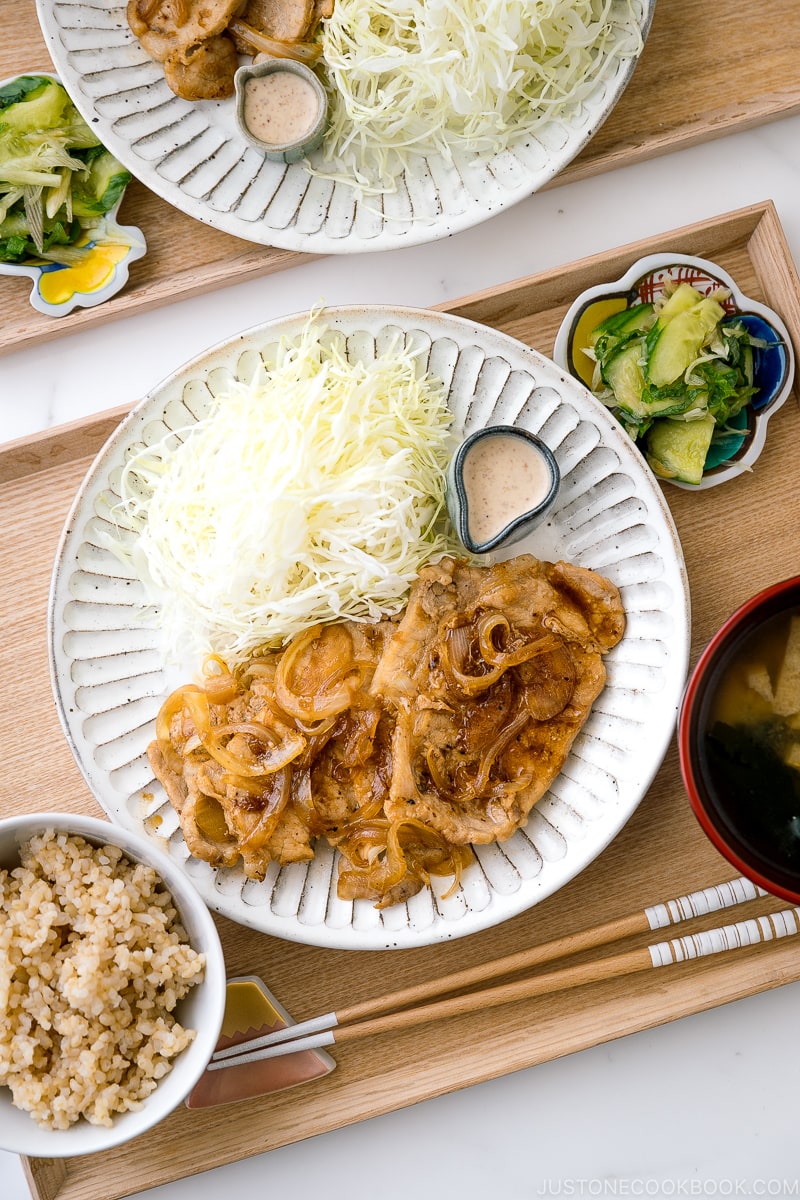
What to Serve with Ginger Pork
You will notice that ginger pork is usually served with thinly shredded cabbage. You can cut the cabbage into thin slices with a sharp knife, or you can use a cabbage slicer as I do. My mom recommended it years ago and I love it!
I love eating the shredded cabbage with extra ginger sauce from the ginger pork. You can serve it with a salad dressing of your choice, such as Japanese Sesame Dressing.
More Delicious Pork Recipes on JOC:
- Asian Pork Chop
- Pan-Fried Ginger Pork Belly from Kodoku no Gurume
- Tonkatsu
- Tonteki
- Honey Garlic Pork Chops
- Miso Pork and Eggplant Stir-Fry
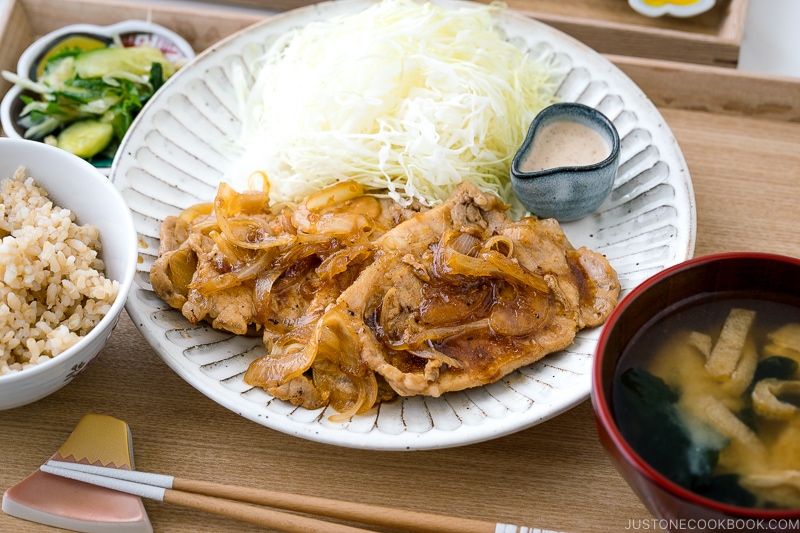
Wish to learn more about Japanese cooking? Sign up for our free newsletter to receive cooking tips & recipe updates! And stay in touch with me on Facebook, Pinterest, YouTube, and Instagram.
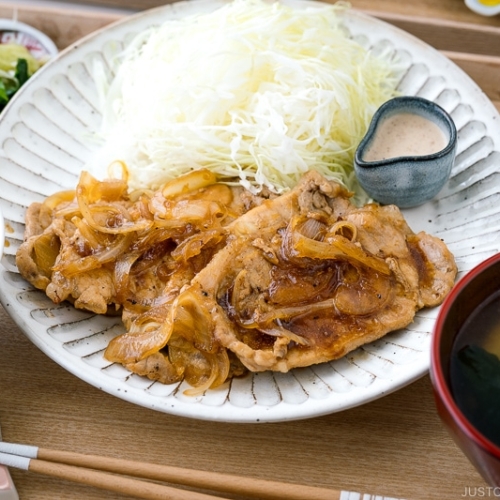
Ginger Pork (Shogayaki)
Video
Ingredients
For the Ginger Sauce
- 2 Tbsp soy sauce
- 2 Tbsp mirin
- 2 Tbsp sake
- 1 tsp sugar
- 1 Tbsp ginger juice (divided; grated and squeezed from 2-inch, 5-cm knob; use the other half for marinating the pork)
- 2–3 tsp ginger (grated; leftover from juicing the ginger; optional, to taste)
- ½ onion (grate 1 Tbsp with juice for ginger sauce; use the rest to slice and stir-fry later)
For the Shogayaki
- ¾ lb thinly sliced pork loin (I use paper-thin sliced pork from a Japanese grocery store; or slice your own meat)
- 1 Tbsp sake
- 1 Tbsp all-purpose flour (plain flour)
- 1–2 Tbsp neutral oil
- freshly ground black pepper (optional)
Instructions
- Gather all the ingredients.

To Make the Ginger Sauce
- In a small bowl, combine 2 Tbsp soy sauce, 2 Tbsp mirin, 2 Tbsp sake, and 1 tsp sugar for the ginger sauce.

- Scrape off the outer ginger skin with a knife (or spoon) and cut off any tough parts.

- Using a grater (I use a ceramic grater that I love), grate the ginger, keeping the juice. Collect the grated ginger and squeeze 1 Tbsp ginger juice. Divide the juice. (Reserve the other half of the juice to marinate the pork later.)

- Add half of the ginger juice to the sauce bowl. Then, add as much of the leftover grated ginger (optional) as you like to the sauce. My family likes a strong ginger taste, so we add about 2–3 tsp ginger, grated.

- Next, grate ½ onion until you get 1 Tbsp grated onion with juice. (Use the remaining onion to stir-fry later.)

- Add the grated onion with juice to the ginger sauce and mix it all together.

To Prepare the Ingredients
- Cut the rest of the ½ onion into thin slices.

- Now, prepare ¾ lb thinly sliced pork loin. If your pork slices are thicker than ⅛ inch (3 mm), cut several slits on the connective tissue (the white area) between the meat and fat. Red meat and fat have different elasticities, and they will shrink and expand at different rates as they cook. These slits will allow the pork to stay flat while pan-frying and prevent it from curling up.

- Sprinkle the other half of the ginger juice and 1 Tbsp sake on the pork slices. Set aside for 5 minutes. Tip: Sake and ginger juice helps to remove the pork‘s gamey odor.

- When you‘re ready to cook the pork slices, lightly sprinkle them with 1 Tbsp all-purpose flour (plain flour). If your pork slices are paper thin—less than ⅛ inch (3 mm) thick—you do not need to dust with flour. Tip: Dusting with flour prevents the pork from drying up and keeps the juices inside the meat.

To Cook the Pork
- Preheat a large frying pan over medium-high heat. When the pan is hot, add 1–2 Tbsp neutral oil. Then, add the pork slices in a single layer, turning them over once the bottom is golden brown. Cook in batches so the meat sears properly; you don‘t want to steam the pork in an overcrowded pan.

- When the pork is no longer pink, transfer to a plate. Make sure not to overcook the pork at this stage as we will continue to cook it in the sauce later.

- Once you‘ve removed the pork, add more oil to the pan (especially if your pan is not non-stick) and add the onion slices.

- Sauté the onion slices on medium heat until golden brown, about 6–8 minutes. When the onion slices are tender and translucent, add the pork back to the pan.

- Stir the sauce one last time to make sure the sugar is not at the bottom of the bowl and pour it over the pork. Bring the sauce to a simmer and spoon it over the pork for about 2 minutes. Season with freshly ground black pepper to taste (optional).

- When the sauce has thickened, the Ginger Pork is done. Transfer it to a serving plate and enjoy.

To Serve
- We often serve Ginger Pork with thinly shredded cabbage. I use a cabbage slicer to shred it finely. I love eating the shredded cabbage with extra ginger sauce from the ginger pork, or serve it with a salad dressing of your choice, such as Japanese Sesame Dressing.
To Store
- You can keep the leftovers in an airtight container and store in the refrigerator for up to 3 days or in the freezer for a month.
Nutrition
Editor’s Note: The post was originally published on June 20, 2011. The images and blog content have been updated and a new video is added in September 2021.
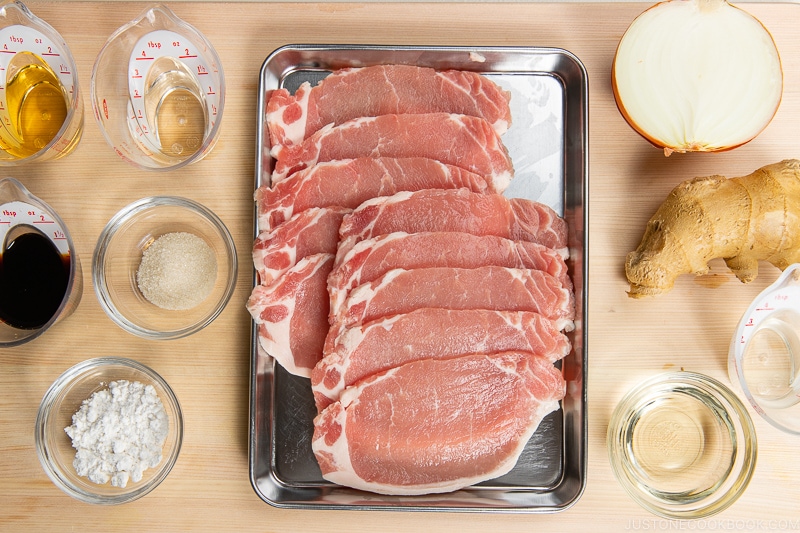
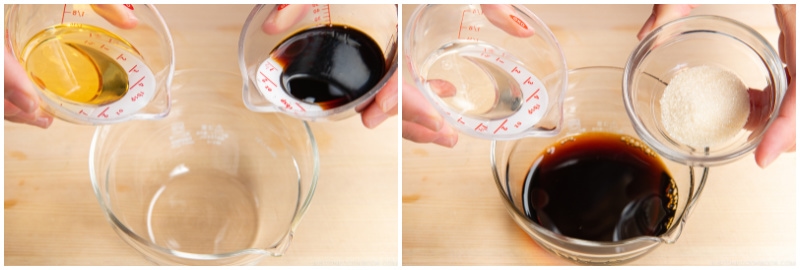
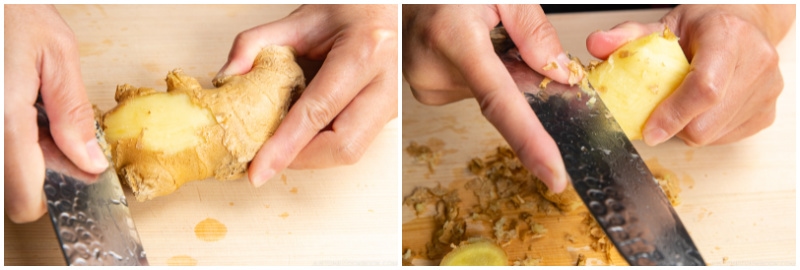
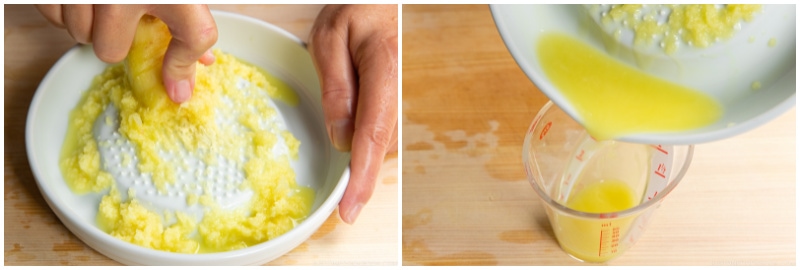
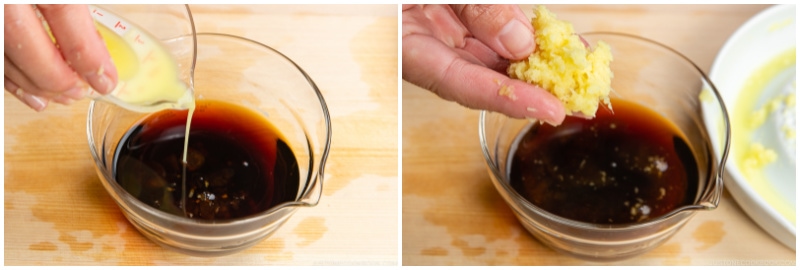
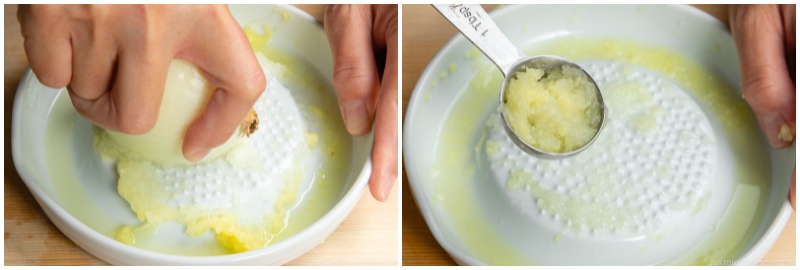
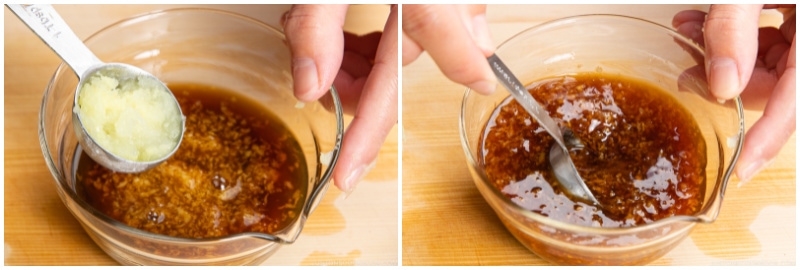
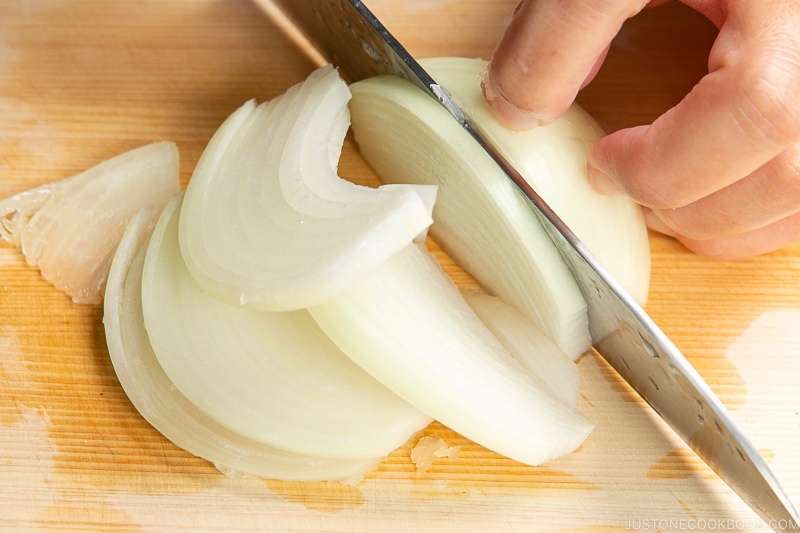
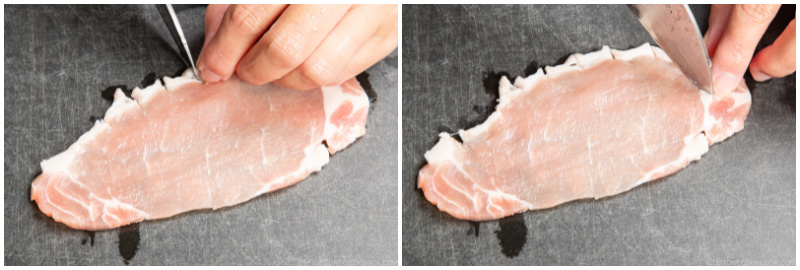
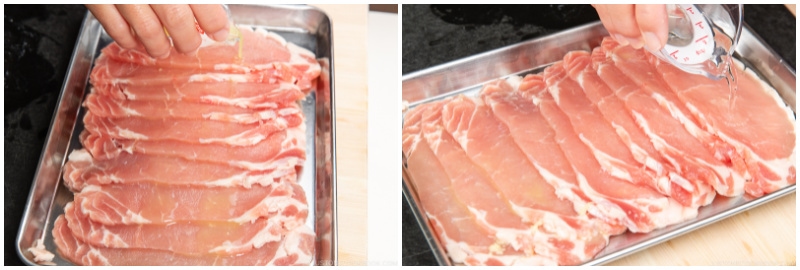
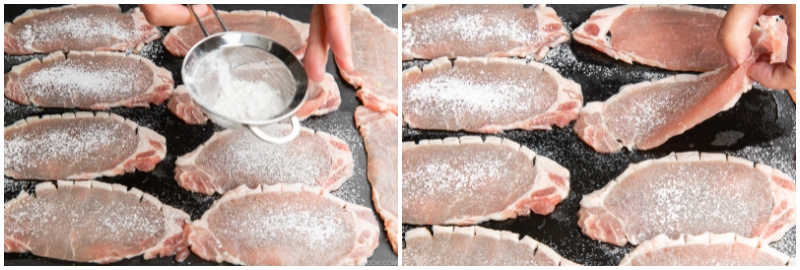
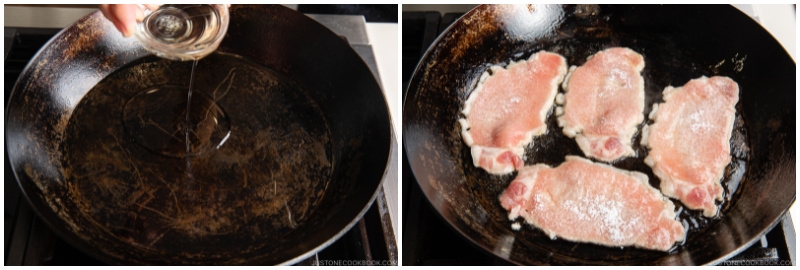
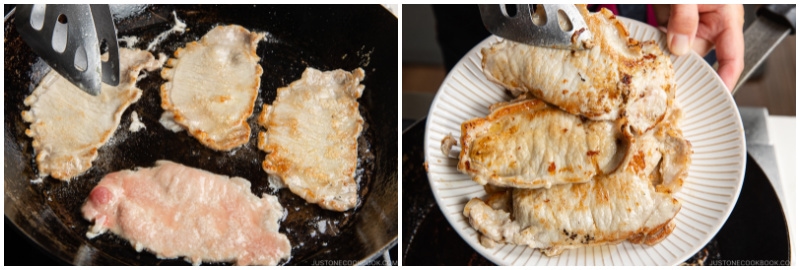
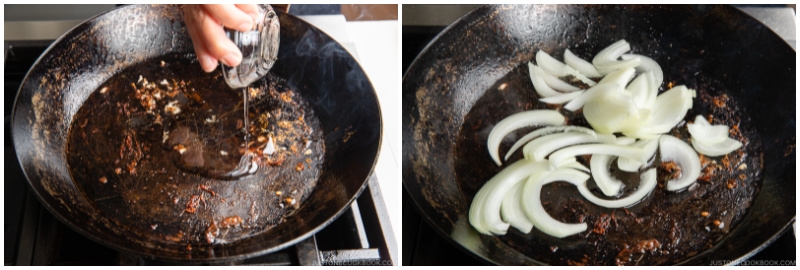
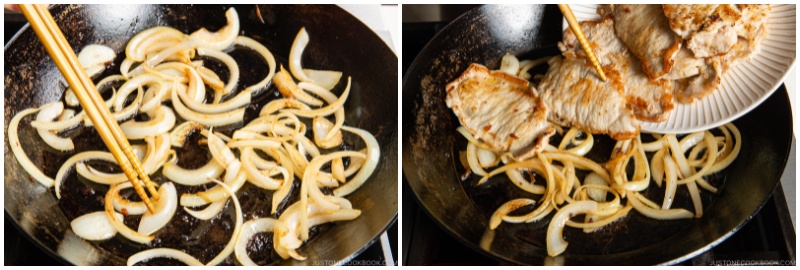
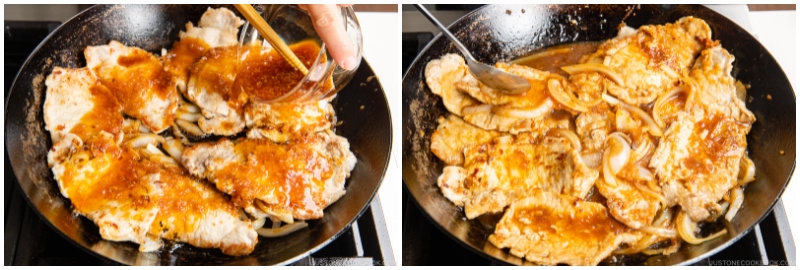
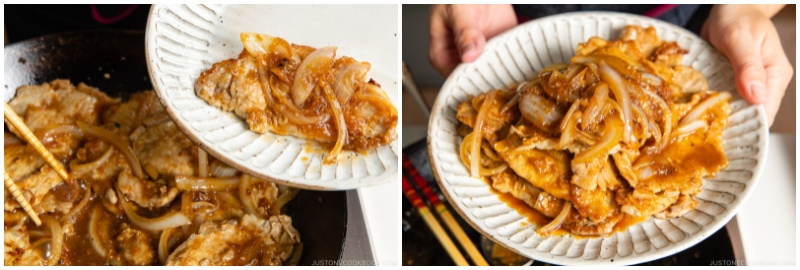










I just made this tonight, after wanting to for *ages*. I adjusted it a little bit (mostly, I just used chicken instead of pork), but it was amazing. It was so much faster than I thought it would be, and I’m definitely going to have to make it more often. And now I have leftovers for lunch tomorrow! Thank you for sharing this recipe!
Hello, Quill. We’re happy to hear you enjoyed Nami’s recipe!
We hope you had a nice lunch the next day, too.
Thank you so much for your kind feedback.🥰
Excellent recipe, Visiting my son and family in Japan, I cooked this meal and was bery well received.
Hi John! Thank you for using Nami’s recipe! We are glad to hear everyone enjoyed it.
We hope you had a wonderful trip as well!
Family loved it. Taste great and easy to make.
Hi Kim! Aww☺️. We are so happy to hear your family loved this dish.
Thank you so much for trying Nami’s recipe and for your kind feedback!
I made this. It was wonderful. My family enjoyed it very much.
Although, I would suggest improving your recipe instructions. For example, no mention of how long to marinade the pork with the sake and ginger juice. I did 10-15 minutes. Secondly, although your photo shows adding the ginger sauce to the pan, there is no mention of it of when to add it. I am an accomplished cook so these items were not a problem. However my son or his wife after reading the directions found it confusing. I will make this again.
I am enjoying your recipes, tips, notes and website. Thank you for your hard work and efforts.
Hi Don! Thank you for trying this recipe! I’m glad your family enjoyed it.
And thank you for your feedback. I really appreciate it. I added 5 minutes for the sake and ginger step. I also added “to make sure the sugar is not at the bottom of the bowl” to the sentence “Stir the sauce one last time and pour it over the pork.” I think it was confusing because it seems like you’re stirring the sauce in the frying pan… but what I meant was to stir the sauce in the bowl BEFORE pouring over the pork. Hope it’s clear now. 🙂
I would like to know if i can use frozen shoga and not nama shoga in the recipe .If not when can I use frozen shoga?
Hi Luis, Thank you for reading Nami’s post and trying her recipe!
Yes. You can use frozen Shoga (Ginger) for this recipe.
We hope you enjoy this dish! 😊
Yum!
Thank you, John! Happy Cooking!😊
Love your dishes. Thank you for sharing them. I’d like to know where I can buy the ginger grater that you’re using.
Hi Gemma! Thank you very much for reading Nami’s post and for your kind feedback!
Nami purchased it from the Amazon store.
Here is the link for ginger grater: https://www.amazon.com/dp/B000KKK4YC?tag=onamzjusoneco-20&linkCode=ssc&creativeASIN=B000KKK4YC&asc_item-id=amzn1.ideas.2U85QFHG8JUD1&th=1
We hope this helps!
Thank you for your time, effort continued Japanese food content. I’ve used many recipes, but also have gained experience from your technique & tips.
Hi Helen! Thank you very much for your kind feedback!
We are so happy to hear you enjoyed many recipes, and techniques and tips were beneficial to you. Happy Cooking!
Dear Nami,
I made your recipe for Shogayaki tonight exactly as you gave it …along with one of your cucumber salads & a Napa salad (following your recipe). I also made boiled rice using a mixture of different rices including Chinese “Black Rice”. The result was totally delicious.
Thank you, Richard
Hi Richard! Thank you very much for trying many of Nami’s recipes and for your kind feedback!
Nami and JOC team are so happy to hear you enjoyed the meal! Happy Cooking!💞
Hi! I saw this recipe for Soy-seared Pork (Butaniku no tatsuta yaki) using chopped pork shoulder, sake, mirin, soy sauce, ginger, mayonnaise & potato starch. I’m unsure how finely chopped the pork shoulder is – Is that like making meatballs ? Then I saw your recipe so I’m wondering if this is the same, but there’s not recipe. Do you know that recipe? Hoping to see your version!
Hi Elle! Thank you very much for reading Nami’s post!
There are many ways to make Tatsuta Yaki, and we are unsure if that is like the meatballs. If the recipe is using chopped pork, it is probably the meatball shape.
Unfortunately, We currently don’t have the Tatsuta Yaki recipe on the site, and we think the closest one is this one: https://www.justonecookbook.com/teriyaki-pork-balls/.
We hope this helps!
Ginger pork for dinner tonight! Your recipes always “oishiso’ (I just learned this word from my daughter last night). Always look to JOC for ideas and I look around my kitchen for the ingredients. I used thin sliced pork belly~ paper thin. I doubled the amount of ginger and garlic and added thin sliced round onion. And I learned something new tonight grated round onion, never used that before. I think I will be using it more often. The flavors were delicious and the pork belly melts in your mouth. There were no leftovers so I guess my family loved it too. They didn’t say much they were too busy eating… hahaha!
Next I think I’m going to try the grated onion in some sashimi and poke dishes.
Thank you for the recipe!
Hi Scott! Wow! What a nice photo! Thank you very much for reading Nami’s post and sharing your cooking experience with us!
We are so happy to hear you and your family enjoyed the dish very much! 😊
Grated onion is commonly used for Japanese cooking, and you may find the technique in Nami’s other recipes.
Here are a few examples;
Garlic Onion Chicken:https://www.justonecookbook.com/chicken-with-garlic-onion-sauce/
Wafu Dressing (Japanese Salad Dressing):https://www.justonecookbook.com/wafu-dressing-japanese-salad-dressing/
We hope you try them in many ways! Happy cooking!
Thank you! I will try it out.
Made this for dinner tonight and it was so good!! As soon as I added the sauce the aroma just took me back to my Aunt’s kitchen in Japan! Glad I found this recipe thank you Nami!!
Hi Mariko! We couldn’t be happier to hear how much joy and excitement Nami’s recipe has brought to you!
Thank you very much for trying Nami’s recipe and for your kind feedback.
My husband went completely crazy over this dinner (I added your potato recipe to the side also), many memories from living in Tokyo for him. Thank you very, very much.
Hi Hayley! We couldn’t be happier to hear how much joy and excitement Nami’s recipe has brought to you!
Thank you very much for trying Nami’s recipe and for your kind feedback!
Ginger pork was fantastic and quick! I am never disappointed with your recipes. Arigato.
Hi MrsBing, Thank you very much for trying Nami’s recipe and for your kind feedback!
We are so glad to hear you enjoy many recipes from our site.🥰